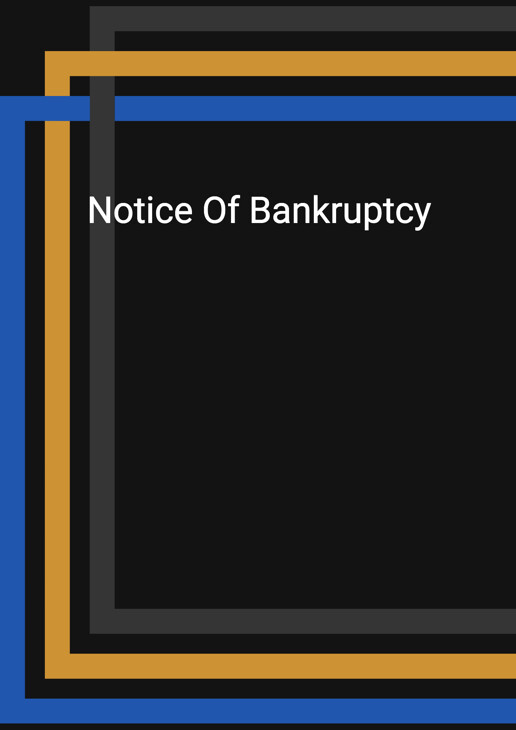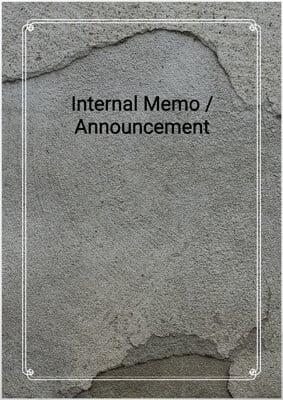How to Tailor the Document for Your Need?
01
Create Document
Click "Create Document" button and the document will be prepared with your account details automatically filled in.
02
Fill Information
Please fill in any additional information by following the step-by-step guide on the left hand side of the preview document and click the "Next" button.
03
Get Document
When you are done, click the "Get Document" button and you can download the document in Word or PDF format.
04
Review Document
Please review the document carefully and make any final modifications to ensure that the details are correct before publication / distribution.
Document Preview
Document Description
A "Notice to Creditors about Bankruptcy Filing" is a formal document issued by an individual or entity (usually a debtor) who has filed for bankruptcy. This notice serves to inform all known creditors about the bankruptcy proceedings, their rights, and the procedures they must follow to assert their claims. It plays a crucial role in maintaining transparency, protecting creditors' interests, and ensuring legal compliance in the bankruptcy process.
The need for a Notice to Creditors arises when an individual or business faces insurmountable financial challenges and decides to seek protection under bankruptcy laws. Bankruptcy is a legal process that allows debtors to either discharge their debts or reorganize their financial affairs and create a repayment plan. In both cases, creditors have a legitimate right to be informed about the proceedings to protect their interests.
The Notice to Creditors typically contains essential information such as the debtor's name, the type of bankruptcy filed, the court where the case was filed, and contact information for the debtor and their attorney. It also provides a deadline for creditors to file their claims with the bankruptcy court.
Ensuring compliance with local laws and regulations is essential when issuing a Notice to Creditors. Bankruptcy laws vary from one jurisdiction to another, and compliance ensures that the process is legally valid and protects the rights of all parties involved. Failing to adhere to local laws can result in legal challenges, delays in the bankruptcy process, and potential liability for the debtor.
The Notice to Creditors is an important part of bankruptcy proceedings as it:
Notifies Creditors: It informs creditors about the bankruptcy case, allowing them to participate in the process, assert their claims, and attend hearings if necessary.
Preserves Creditor Rights: By providing creditors with information about the bankruptcy, it safeguards their rights and ensures they have an opportunity to seek repayment as per the bankruptcy plan.
Maintains Transparency: Transparency is essential in bankruptcy cases to build trust among all parties involved. Providing notice to creditors is a fundamental step in achieving this transparency.
Facilitates Legal Compliance: Compliance with local laws and bankruptcy rules is crucial to prevent disputes and legal challenges during the bankruptcy process.
In conclusion, a Notice to Creditors about Bankruptcy Filing is a vital component of bankruptcy proceedings. It serves to inform creditors of the situation, preserve their rights, and ensure legal compliance. It plays a pivotal role in the bankruptcy process by promoting transparency and fairness for all parties involved. Local laws and regulations must be followed meticulously to ensure the notice's validity and effectiveness in a bankruptcy case.
How to use this document?
1. Identify Your Creditors: Compile a list of all known creditors who should receive the notice. These are individuals or entities to whom the debtor owes debts.
2. Print or Send Electronically: Depending on your communication preferences, you can print the document and send it via traditional mail or email it electronically to the intended recipients (creditors).
3. Record Communications: Maintain records of the communications sent to creditors, including copies of the customized notice and any responses or correspondence received.
4. Ensure compliance with local laws: It is advisable to consult with an attorney or legal counsel experienced in bankruptcy matters to ensure that the notice is in compliance with all relevant laws and accurately reflects the details of the bankruptcy case.
Not the right document?
Don’t worry, we have thousands of documents for you to choose from:








